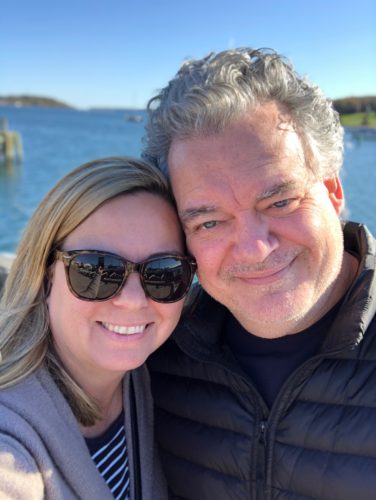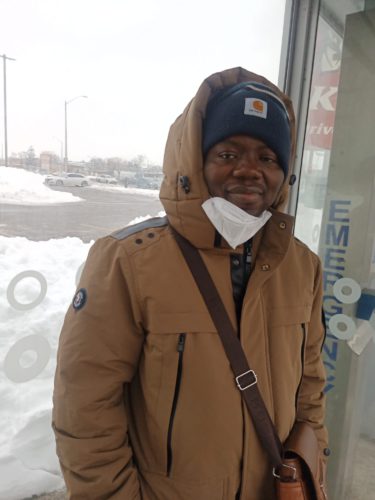The faces behind the numbers

Why Halifax came out on top in the 2021 Canadian census
It was time for Friday prayer, and Shaista Ghori couldn’t find a mosque. She had just moved to Halifax and her phone was dead.
A stranger led her to the Centre for Islamic Development on Robie Street.
“She literally held my hand, and she took me, saying that ‘This is the mosque here. You can go and pray.’ ”
The woman who helped Ghori wasn’t Muslim, she had just seen people leaving the mosque every Friday afternoon. This moment sticks with Ghori. Related stories
Another memory is when she went to a Tim Hortons in Sydney with a group of friends. It was the beginning of Ramadan, and they were dressed in traditional clothing. An elderly woman approached Ghori and asked about her dress.
“She was very keen to know about how the festival is celebrated, and she complimented me as well, like, ‘Your dress is so awesome.’ And she was interested about the culture.”

caption
Shaista Ghori and her family.Ghori is one of the 45,785 new people in Nova Scotia who either moved here or were born here between 2016 and 2021, according to the latest census. The data released Wednesday revealed the province grew by five per cent, its fastest rate since the 1970s and the only increase of more than one per cent in the last five census periods.
And 80.1 per cent of Nova Scotia’s growth happened in Halifax. The city’s population jumped from 403,131 to 439,819 between 2016 and 2021, an increase of 9.1 per cent — triple its growth rate in the previous census.
Like many others, Ghori came to Nova Scotia for school. She moved from Hyderabad, India to
Sydney to study public health at Cape Breton University in 2019. When classes moved online, she relocated to Halifax.
Ghori wasn’t going to stay originally, but she fell in love with the city and its people. Her husband and two children joined her in Halifax in October 2020. They now live in the West End, and she works for the Nova Scotia Health Authority as a site screener.
She said Halifax is a great place to raise a family because “everything is so accessible and nearby.” She enjoys taking her kids to the waterfront and the central library.
“People are very warm, very friendly, very welcoming,” Ghori said.
“Nova Scotians are very good people. Wherever I go with my family they were very good to all of us.”
The Halifax exception
As with the rest of Canada, the vast majority (80 to 85 per cent) of Halifax’s growth comes from immigrants, said Stacey Hallman, an analyst for Statistics Canada.
When the COVID-19 pandemic caused border restrictions, immigration in Canada “went from record highs in 2019 to lows that hadn’t been seen in a century in 2020.”
But while other cities in Canada saw their growth slow down or even decline due to the pandemic, Halifax continued to grow.
Hallman said this is due to the trend of people moving to Halifax from other provinces. In fact, interprovincial migration numbers went from negative to positive in Nova Scotia.

caption
Dawn Currie and her husband.“From 2011 to 2016, Nova Scotia lost people to other provinces, but in 2016 to 2021 we gained people,” she said.
Nova Scotia lost Dawn Currie in 1997. The elementary school teacher from Reserve Mines, Cape Breton, moved to British Columbia because she couldn’t find a teaching job.
Tired of the business and long commutes in Vancouver, she returned to Nova Scotia with her
husband and two sons in 2019. They now live in Dartmouth, and she said finding a job was much easier this time around.
“I have a delightful 17-minute commute to work … and it’s not frustrating at all. It’s a pleasure,” she said.
Currie said what makes Halifax attractive is the cost of living, better work-life balance and its proximity to beaches.
“If you come in the summer you’re hooked for sure. It’s a beautiful place to live,” she added.
Downtown sees population boom
While 95 of Halifax’s 112 census tracts (small geographic subdivisions) saw some degree of growth, the most dramatic increase happened in a section of the downtown core, which grew by 87.3 per cent.
Downtown Halifax as a whole grew by 26.1 per cent, making it the fastest growing downtown area in all of Canada.
Mayor Mike Savage said Halifax’s downtown was “a bit stagnant,” when he was elected 10 years ago. However, major investments in the area including the convention centre, the central library and the modernization of Argyle Street have made the city more attractive.
Mayor Savage said protecting the city’s heritage will be important as the downtown core continues to develop.
“A lot of the charm of Halifax will stay as it always has been, which is a port city with a nice combination of history but also a progressive attitude toward things like diversity, inclusion and sustainability,” he said.
He said the next step will be to invest in growing communities outside of downtown.
Mapping population change
This map shows the population change between 2016 and 2021 by census tract. The darker the green colour, the more the population increased. Areas in red lost population. Clicking on the arrow will reveal the map legend. The area of the map that extends to the north of HRM encompasses East Hants, now included in the Halifax census metropolitan area by Statistics Canada. The dark border outlines HRM census tracts. Map by Wilson Henry, The Signal.
More Halifax hotspots
Off the peninsula, other areas continue to grow. Neighbourhoods along the west side of the Bedford Basin like Rockingham, Larry Uteck Blvd. and Bedford saw major population surges, as well as parts of Dartmouth.
“We’re getting kind of an energy infusion,” said Kathryn Morse, city councillor for District 10- Bedford Basin West. Some of the fastest growing areas in Halifax are in her district.
“It makes the neighbourhoods livelier. It certainly is better economically for the businesses out here, restaurants to have more people in the area … it feels like things are thriving, I guess, a little bit more,” she said.
For Tim Outhit, councillor for District 16-Bedford-Wentworth, the growth of the Larry Uteck area is an exciting prospect.
“For a long time, Halifax and Nova Scotia has had a stagnant or declining population,” he said. “We’ve seen too many of our young people having to move west for jobs.
Outhit added that the influx of people coming to Halifax from other countries and provinces, as well as students deciding to stay in the city, is a good sign.
“It’s providing jobs to feed the growth and also far more diversity in our population.”
One such new resident in the Larry Uteck neighbourhood is Edwin Kakpata, who moved to Halifax just last week after completing a master’s of finance degree at St. Mary’s University remotely. He said the city is extremely welcoming, especially for international students.

caption
Edwin Kakpata moved to Halifax in early Feb.Already accomplished in the financial sector in his hometown of Freetown, Sierra Leone, Kakpata looks forward to starting a new chapter in Halifax, and for his wife and three sons to join him here.
“I’m a family man. I want my children to grow in a quiet environment,” he said.
He said everyone in Sierra Leone learns about the Black Loyalists who left Nova Scotia and founded Freetown in primary school.
“So (Nova Scotia) is like home away from home,” Kakpata said.
“I think that there’s a quality of life in Nova Scotia that we can offer to people that once they become aware of it, they’re very interested in it. So we obviously as a government have very ambitious population growth goals. So we’re excited to see the population growing across the province. It’s a great time to be in Nova Scotia,” said Premier Tim Houston.
About the author
Kaija Jussinoja
...
